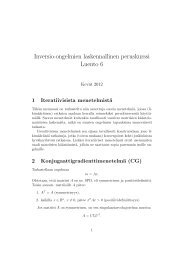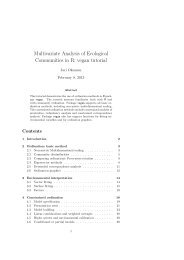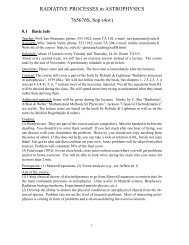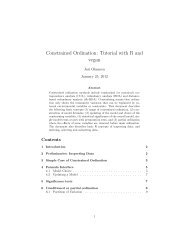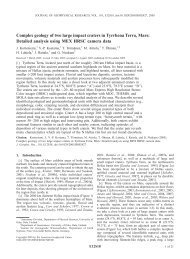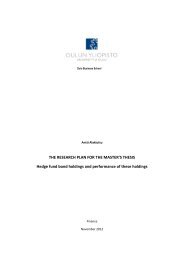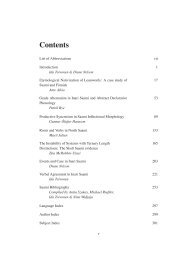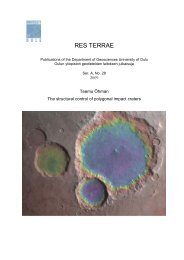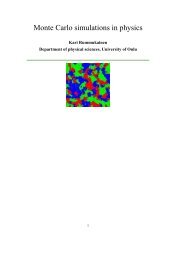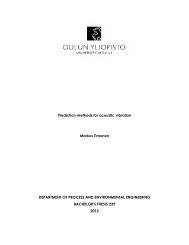Juha Köykkä - Oulu
Juha Köykkä - Oulu
Juha Köykkä - Oulu
- TAGS
- juha
- oulu
- cc.oulu.fi
Create successful ePaper yourself
Turn your PDF publications into a flip-book with our unique Google optimized e-Paper software.
Res Terrae, Ser. A 32, J. <strong>Köykkä</strong>, Sedimentology of the Mesoproterozoic Telemark basin-fills, South Norway: implications for<br />
sedimentation processes, depositional environments and tectonic evolution<br />
pare these signatures to the Vemork Formation basalts and to build a paleotectonic re-<br />
construction of the sedimentary environment. The geochemistry of the basaltic lavas<br />
indicated that the magmatic and tectonic evolution of the Heddersvatnet Formation<br />
was associated with a syn-rift tectonic phase, with more evolved magmas and crustal<br />
contamination following in the late stage of the volcanism. The samples show similar<br />
geochemical signatures as the one of the Vemork Formation basalts, and also some of<br />
the continental flood basalts. The composition indicated deep intra-plate melting com-<br />
patible with a continental within-plate paleotectonic setting. The paper suggests that<br />
the termination of the volcanism indicates a gradual change from the syn-rift to post-<br />
rift stage.<br />
The evidence presented in Paper I supports the idea that the Heddersvatnet and<br />
Vemork formations are time-equivalent strata volcanic-sedimentary rocks that change<br />
laterally from one type to another within a zone that comprises two distinct types of<br />
formations. Although the nature of the contact between the Tuddal and Vemork forma-<br />
tions cannot be established with certainty, the angular unconformity may exist. Paper I<br />
suggests that the formation and nature of the sub-Heddersvatnet unconformity may<br />
reflect fault block rotations inside the sedimentary basin.<br />
Paper II<br />
Paper II focuses to the volcanic-sedimentary Heddersvatnet Formation in area near<br />
town of Rjukan, Telemark, southern Norway (Figs. 3, 4). The main contributions of<br />
Paper II include the following: (i) a detailed description of the sedimentology of the<br />
Mesoproterozoic conglomerate, sandstone and mudstone sequences; (ii) a coherent pa-<br />
leotectonic reconstruction; (iii) information about the relationships between alluvial<br />
fan and braidplain sedimentation; (iv) a description of how primary sedimentary struc-<br />
tures can be preserved in ancient metamorphosed and deformed bedrock, which allows<br />
alluvial fan and braidplain systems to be recognized and a coherent sedimentation<br />
model to be built. Paper II is based on a study of physical features, including textural,<br />
compositional, and lithofacies type criteria, in combination with studies of clastic pe-<br />
trofacies analysis and geochemistry. The sedimentological and geochemical studies<br />
were carried out in 2007–2008.<br />
51



